How to grow melons – a step-by-step guide to cultivating the perfect summer snack, according to experts
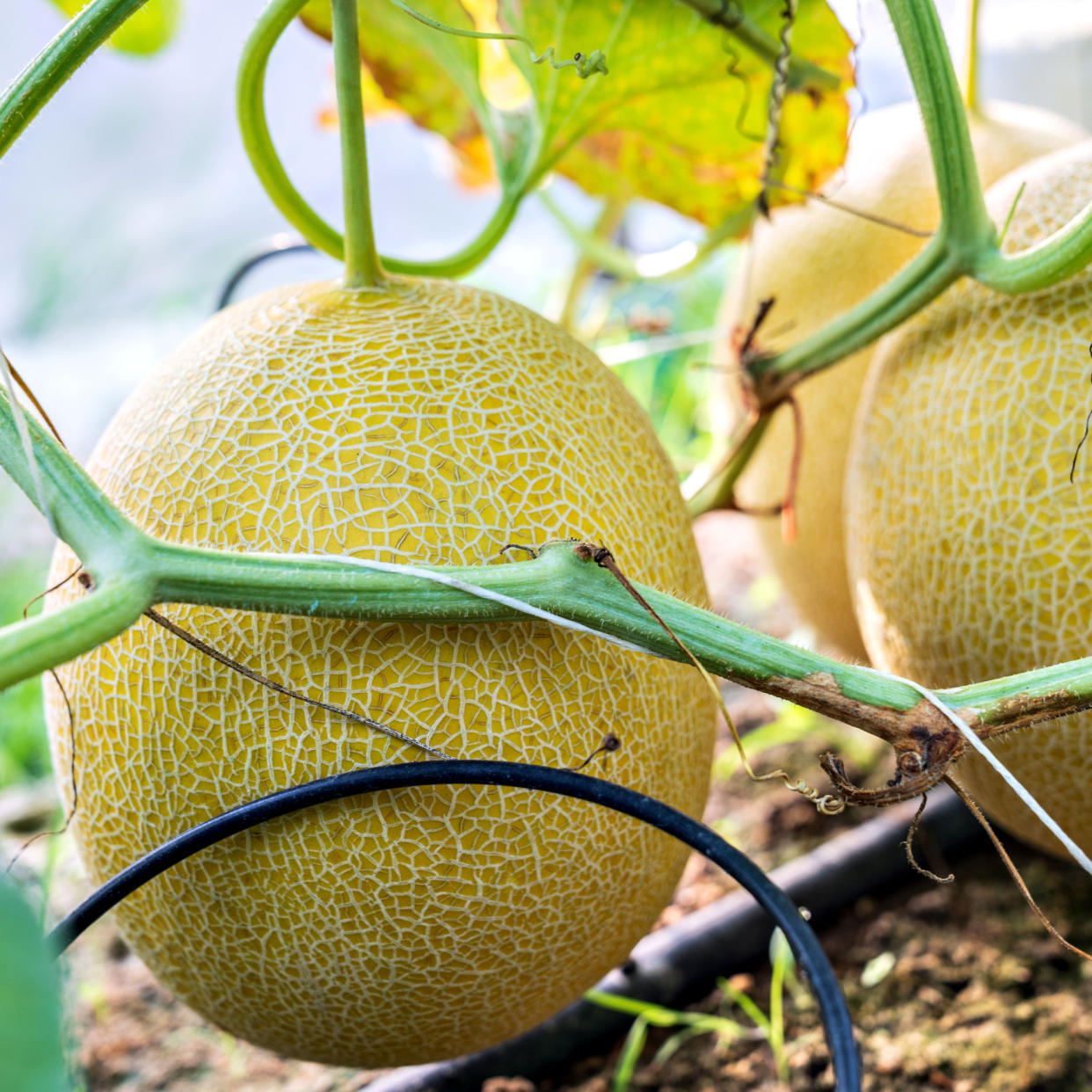
As summer is fast approaching, you might be wondering whether it's possible to grow melons in the UK. After all, who wouldn't want to be able to have their own stock of the delicious fruit grown right from their garden?
It's important to preface that learning how to grow melons is not the easiest task if you're only just starting to grow your own fruit and vegetables at home, as they require very specific conditions to thrive – making growing melons in a greenhouse the ideal setup if you want to sow seeds successfully and not fall victim to the issue of your seeds not germinating.
However, that's not to say that growing melons outdoors is impossible. It just requires a little extra care and attention is all. So, we've asked gardening experts to give us their best tips for growing melons both indoors and outdoors.
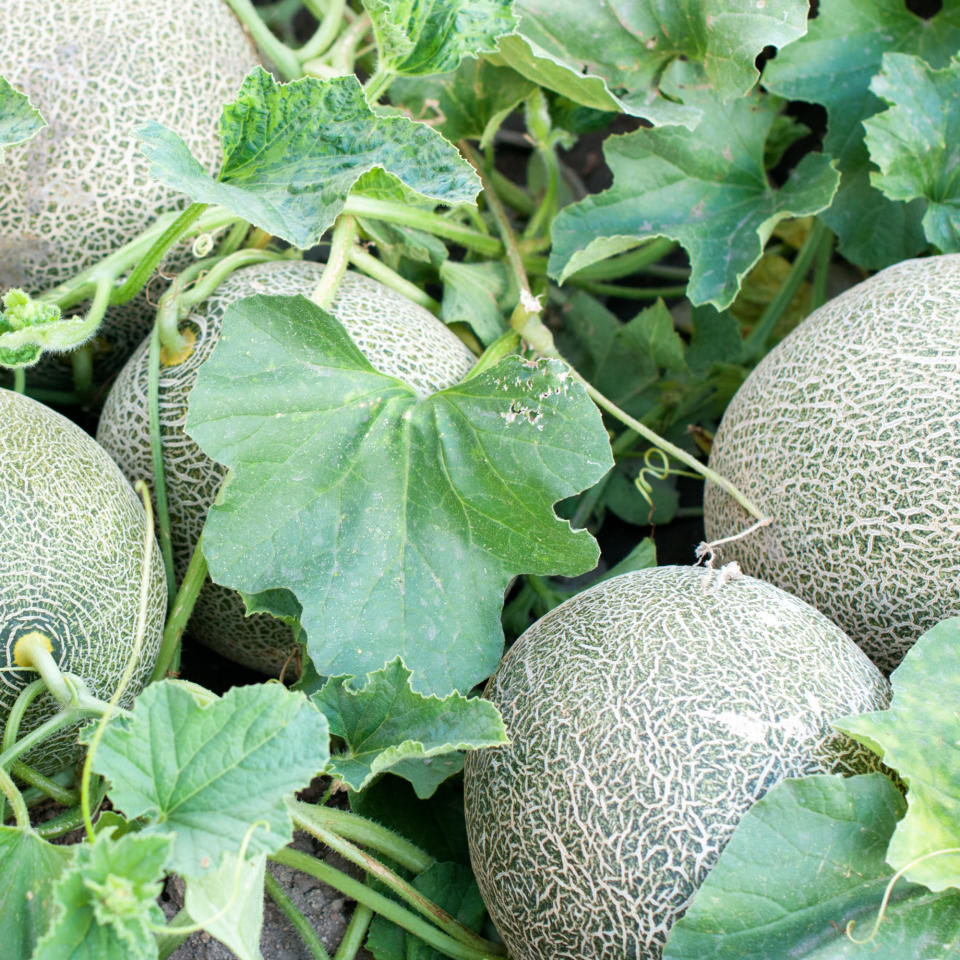
How to grow melons
'Melons can be tricky fruits to grow in the UK, as they require plenty of heat and humidity to thrive. That's why many gardeners opt to grow melons from the comfort of their greenhouses, as they provide the perfect conditions for melons,' explains Andrew White at Rhino Greenhouses Direct.
'“But can you still grow melons even if you don’t have a greenhouse?” we hear you say. The short answer, yes. Melons can be grown indoors, in a cold frame or outside, it may just take a little bit more work to perfect the environments for your melons to thrive.'
What you'll need
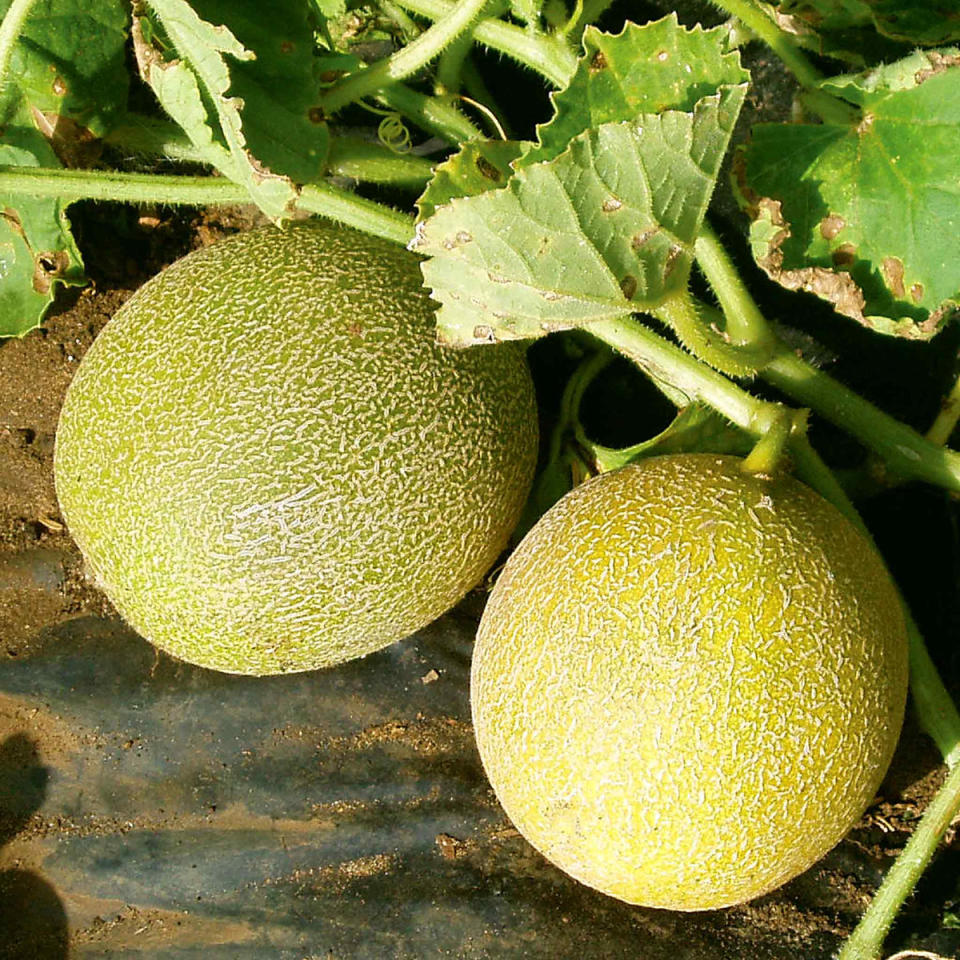
Melon Seeds 'Outdoor Wonder'

Forest Garden 6ft Square European Softwood Trellis Panel
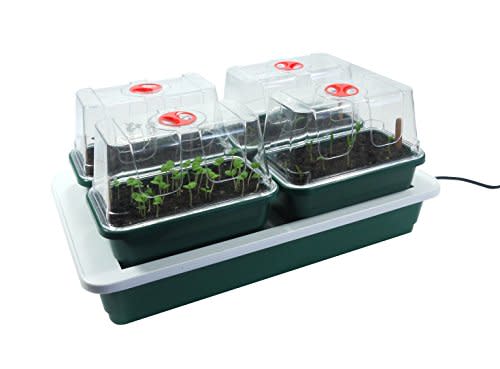
Britten & James Windowsill Propagator Set – Heated Tray & 4 Mini Propagators
Step-by-step guide
1. Choose what melons to grow
Melons are a pretty broad category, so before you attempt to grow melons you should carefully consider what kind you want to see flourish in your greenhouse.
'It's best to go for compact and bush-type varieties, as they require less space and can be grown vertically when trained to trellises or supports,' advises Nelly Hall, brand director of premium greenhouse manufacturer, Alitex.
'Some of my favourites include Cantaloupe, Honeydew, and Mini Watermelons – each has its own unique juicy flavour and makes for the perfect summer snack or sweet addition to a refreshing salad.'
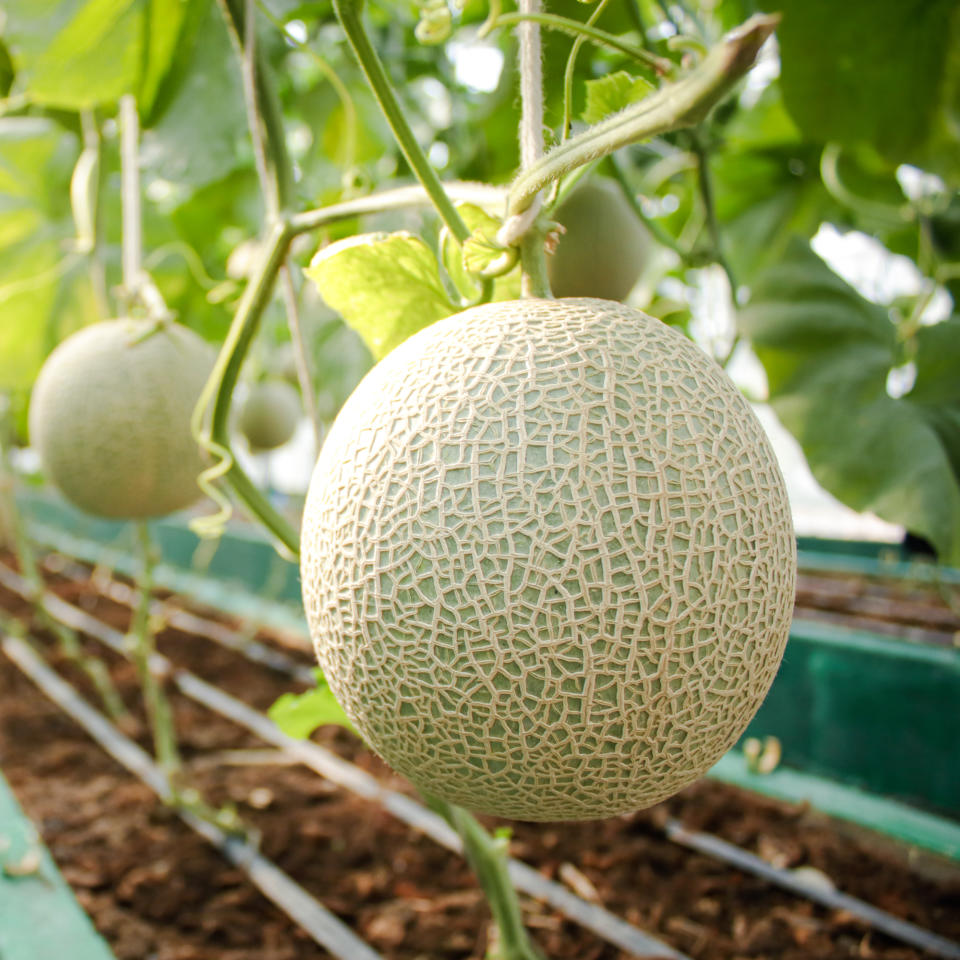
2. Choose the right time to sow your seeds
Now you've chosen which kind of melons to grow, one of the most important things is to ensure you're sowing your seeds at the right time. Luckily, if you're looking to get started, melons are actually one of the best things to plant in May to get you ahead.
Andrew suggests keeping it to early May though, if possible.
3. Sow your seeds under shelter
Irrespective of whether you're choosing to grow melons inside a greenhouse or outdoors, sowing your seeds should always be done under shelter where possible.
'General rule of thumb when growing melons is always to always sow your seeds under shelter, whether it be indoors, in a cold frame or in the safety of your greenhouse, melon seeds should be sown under covers,' explains Andrew.
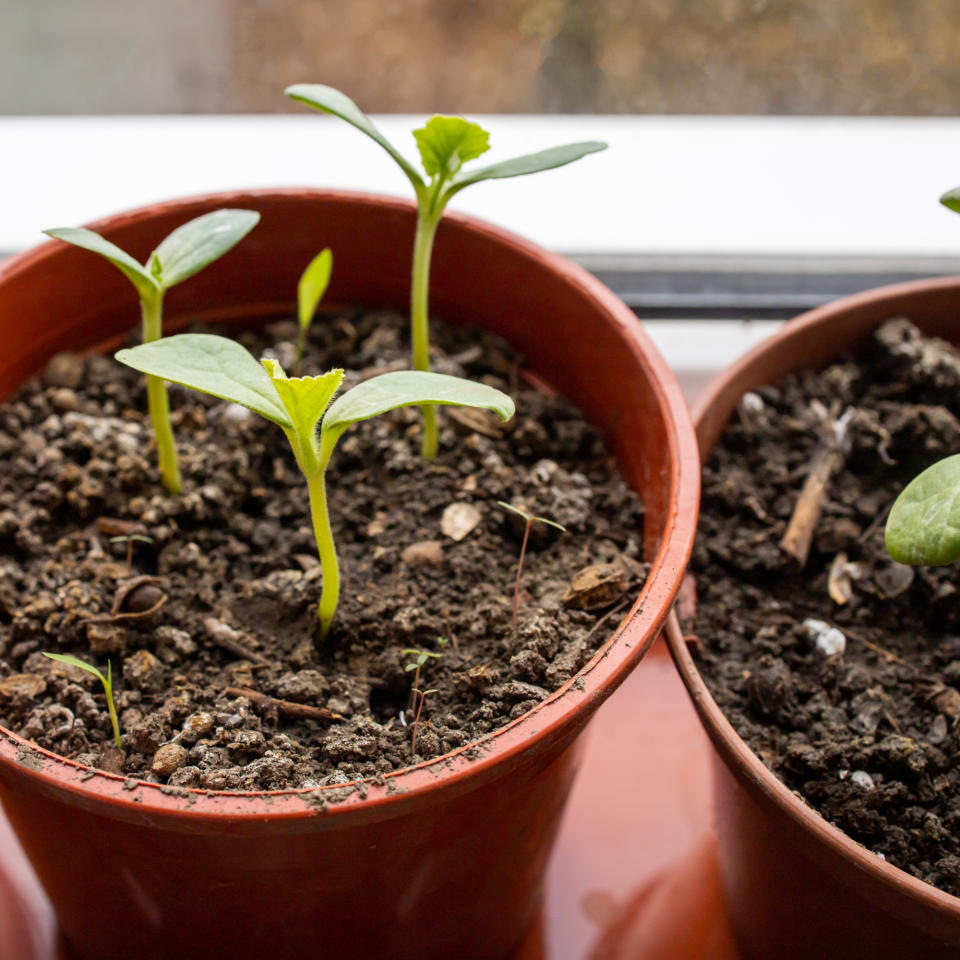
In fact, Josh Novell, garden expert and director at Polhill Garden Centre even suggests investing in a heated propagator as it will 'make life much easier for you' if you can afford the expense. If you're using a heated propagator, Josh advises setting the temperature between 18-21°C, and sow two seeds per pot at a depth of around 1.5cm.
'If you don't have a propagator, though, a sunny windowsill that stays consistently warm can also work; you're just relying on the UK weather, which is rarely a good idea.'
4. Wait for them to germinate
After about a week or so, your sown melon seeds should begin to germinate.
'If both sprout (because remember, you planted two), remove the smallest of the two to give the strongest seedling enough room to grow,' says Nelly. Once they have at least three or four leaves, you can then transplant them into their final growing place, whether it's a greenhouse border, growing bag, or large container garden.
5. Transfer the seedlings
As we mentioned in the last point, it's now time to transplant your seedlings to your garden borders, raised garden beds, or simply in a larger area of a greenhouse.
'Keep an eye on the weather forecast and ensure that you plant your melons on a warm and sunny day, so the soil is nice and warm. Ensure that your melons are provided suitable shelter from high winds,' advises Andrew.
'We recommend covering your plants or moving them into the safety of your home or greenhouse in high winds. This ensures that your plant doesn't go into shock with the changes in temperature.'
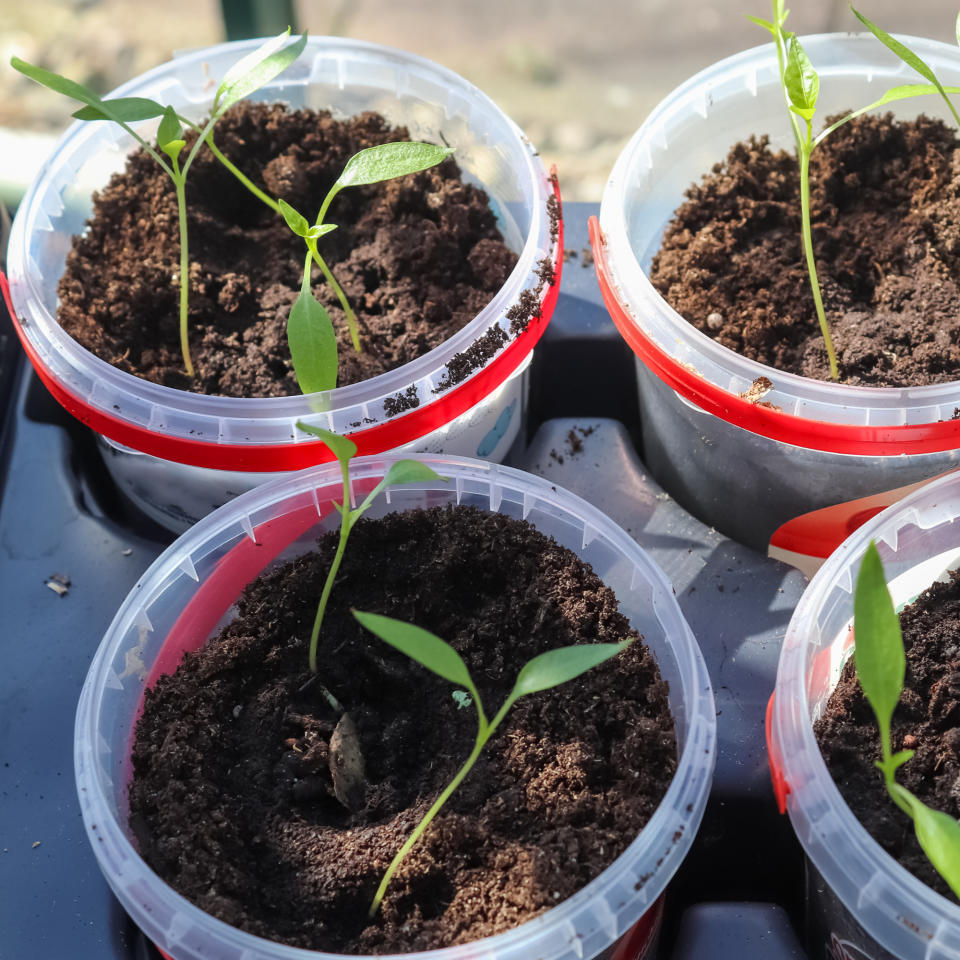
6. Provide support structures
To help your melons grow successfully, it's definitely worth adding support structures like garden trellis ideas, stakes, or netting to encourage the plant to grow upwards.
Thankfully, providing support your plant doesn't have to cost you an arm and a leg either as there are plenty of budget garden trellis ideas you can explore, too.

7. Regularly water and tend to them
Now, you simply play the waiting game and continue to tend to your plants as you would with anything else you're currently growing in the garden.
One thing to note is that melons are very hungry plants and to keep them growing well, Josh advises feeding them a liquid fertiliser every few weeks during the growing season and to aim for deep watering at the base of the plant, avoiding the leaves.
Finally, similar to the tip we learnt about pinching sweet peas to aid their growth, Nelly advises pinching out a couple of side shoots out of your melon plant every week or so to prevent the stems and leaves from becoming overcrowded.
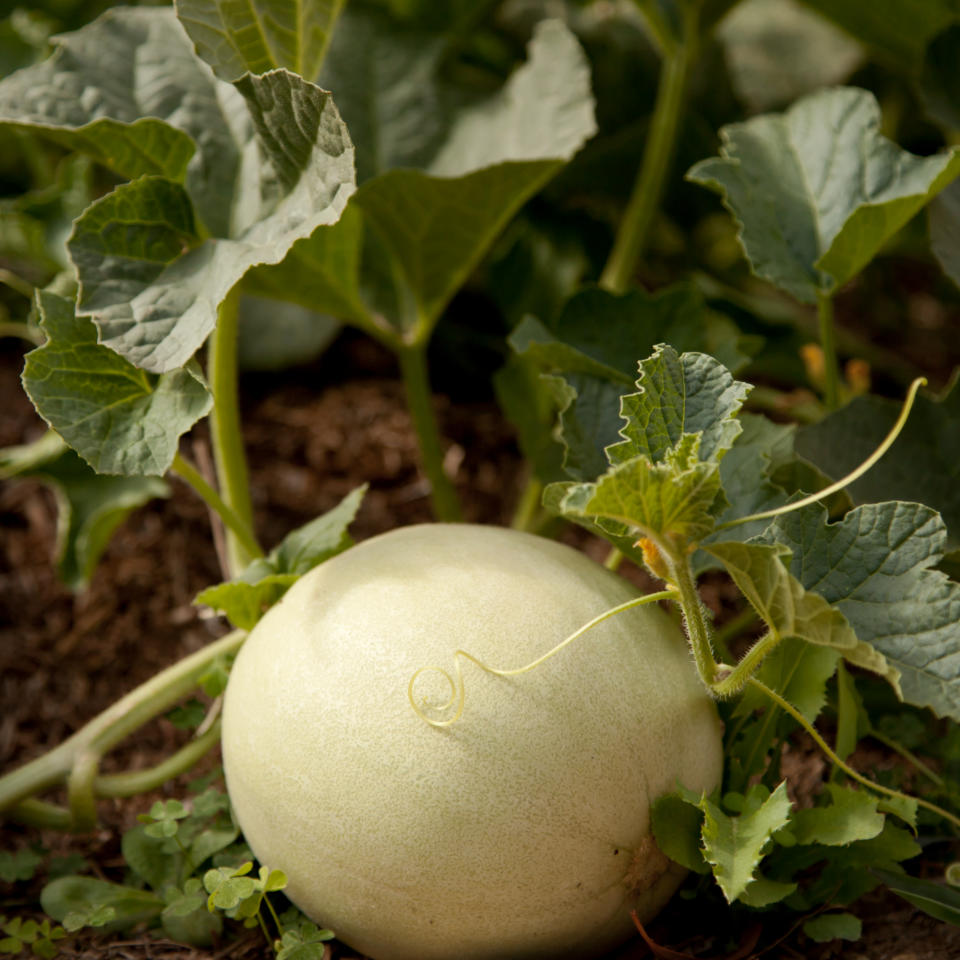
FAQs
Can you grow melons in the UK?
'Melons are not native to the UK, but with the right care and attention, they can be grown here. However, it's not quite as straightforward as growing some other fruits, as they're fairly sensitive and need warmth for germination and growth,' explains Josh Novell at Polhill Garden Centre.
That said, it's best to sow seeds indoors (at least initially).
Can you grow melons outside in the UK?
'Some people may not have the option of growing their melons indoors, and although it's not ideal, it is still possible to grow them outside in the UK,' assures Josh.
'Melons need plenty of sunshine, which is the main reason they can struggle to grow outside, but if you can find a sunny spot that's sheltered from the wind, you may be in luck. A south-facing wall or border that gets plenty of sun throughout the day is what you want to be searching for,' he adds.
In the case of growing melons outdoors in the UK, soil temperature is crucial. Ideally, you want to be aiming for a consistent temperature of 22-25°C. Understandably, this is only partially in your control so Josh suggests covering your melon bed with black plastic mulch around four weeks before planting to help warm the soil up prior.
Now you know how to grow melons indoors and outdoors, you can get started on dreaming up that mouth-watering harvest.


